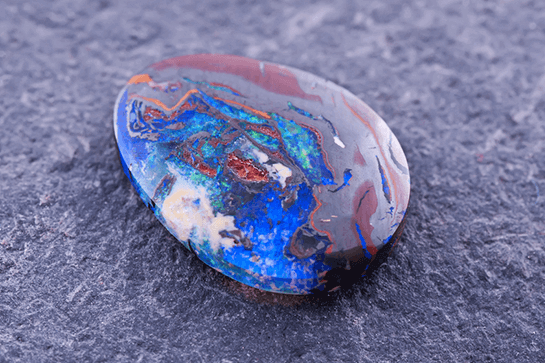Welcome to Facts Vibes! Today, we delve into the mesmerizing world of opals. Uncover intriguing facts about this iridescent gemstone, from its formation to historical significance. Join us as we explore the captivating allure and mystical properties of opals. Let’s embark on a journey through the fascinating realm of opals.
The Fascinating Origins of Opal: A Closer Look at Its Unique Properties.
The fascinating origins of opal: A closer look at its unique properties. Opal is a mesmerizing gemstone that has captivated humans for centuries with its iridescent colors and seemingly endless depths. Its name is derived from the Sanskrit word “upala,” which translates to “precious stone.” Opals are formed from silica deposits that have been exposed to water over long periods of time, resulting in their distinct play-of-color effect. This optical phenomenon occurs due to the diffraction of light as it passes through the tiny spheres and voids within the stone. Opals are also renowned for their ability to diffract light into a spectrum of colors, giving them an ethereal and almost mystical appearance. In ancient times, opals were believed to possess mystical powers and were often treasured as symbols of love, hope, and purity. Today, opals continue to be prized for their unique beauty and are considered a symbol of creativity and inspiration. Whether adorned in jewelry or admired in its natural form, the allure of opal remains as enchanting as ever.
Most popular facts
Opal is the birthstone for October.
Opal is the birthstone for October.
Australia produces about 95% of the world’s opal supply.
Australia produces about 95% of the world’s opal supply.
Opals are made up of silica and water.
Opals are composed of silica and water.
Black opals are the rarest and most valuable type of opal.
Black opals are indeed the rarest and most valuable type of opal.
Opals can contain up to 20% water content.
Yes, opals can contain up to 20% water content.
The play of color in opals is caused by the diffraction of light.
Yes, the play of color in opals is caused by the diffraction of light.
Opals are classified based on their body tone, play of color, transparency, and patterns.
Opals are classified based on their body tone, play of color, transparency, and patterns.
Opal is the national gemstone of Australia.
Opal is indeed the national gemstone of Australia.
Opals were highly valued by ancient Romans, Greeks, and Arabs.
Opals were highly valued by ancient Romans, Greeks, and Arabs.
Mexico, Brazil, and Ethiopia are also significant sources of opal.
Mexico, Brazil, and Ethiopia are also significant sources of opal.
Opals are relatively fragile and can be easily damaged if not handled carefully.
Opals are relatively fragile and can be easily damaged if not handled carefully.
The largest opal ever found, the “Olympic Australis,” weighed over 17,000 carats.
The largest opal ever found, the “Olympic Australis,” weighed over 17,000 carats.
Ethiopian opals are known for their vibrant and diverse color patterns.
Yes, Ethiopian opals are indeed known for their vibrant and diverse color patterns.
Opals were believed to possess magical properties and bring good luck to the wearer.
Opals were believed to possess magical properties and bring good luck to the wearer.
Opals are often used in jewelry, including in rings, pendants, and earrings.
Opals are often used in jewelry, including in rings, pendants, and earrings.
In conclusion, the enchanting beauty and fascinating history of opals make them a truly remarkable gemstone. From their unique formation to their diverse colors, opals continue to captivate people around the world. Whether used in jewelry or admired for their natural wonder, opals are undoubtedly a cherished part of our Earth’s treasures.
